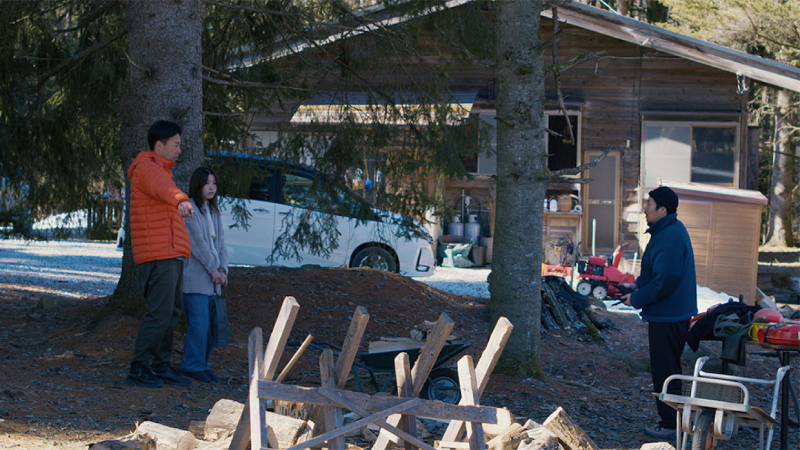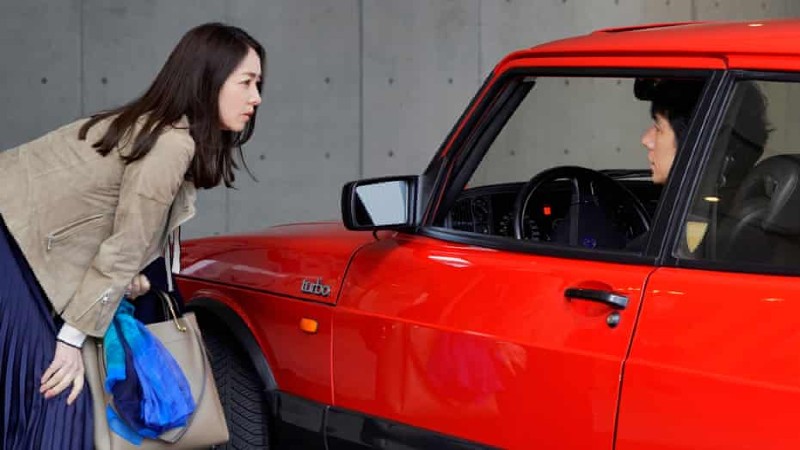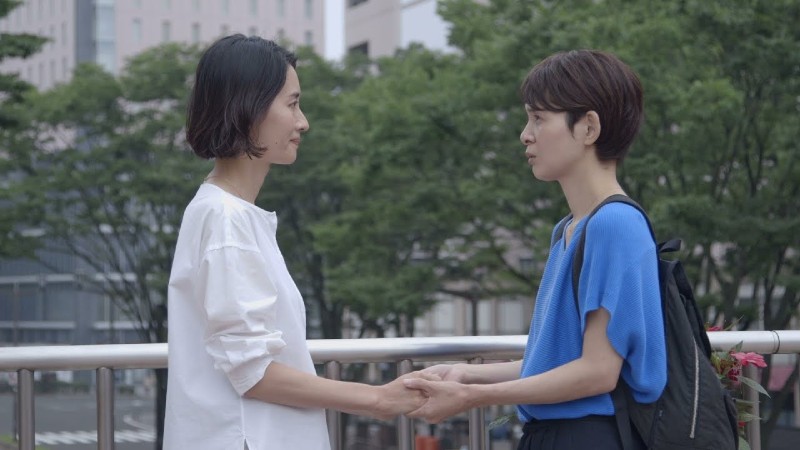The familiar battle of the new versus the old takes place. Mizubiki is a rural community of just 6,000 inhabitants. These people are deeply attached to their land, despite the fact that they first moved there after WW2. Their sense of pride and possession is infrangible. They feel threatened by the plans to build a glamping site for Tokyoites seeking a city break. A septic tank is to be dug at the top of the hill, which would inevitably contaminate the crystal-clear waters which they cherish and use as their main staple. A restaurant owner confesses that she moved away from the country’s capital just because the udon tasted better with the local water. The prospect of effluence of the affluent infecting and debasing their lifestyle is a terrifying one.
The first third of the movie is almost entirely observational.The action is unhurried, bordering on slow cinema. Tracking shots with the camera facing up, forwards, backwards and sideways through the woodland emphasise the vastness of the landscape. It is winter and the ground is covered with snow. The laconic Takumi (Hitoshi Omika) carries water through the forest and cuts wood for his fireplace. He is often in the company of his only child, eight-year-old Hana (Ryo Nishikawa). A decomposing fawn reminds father and the daughter that animals too are an integral part of the habitat, and that life is just a fleeting illusion. A minimalistic score by Eiko Ishibashi adds a touch of eeriness. It is only roughly 30 minutes into the film that the action moves indoors, and the plot begins to unfold.
The second third of the film is the most tense one. Locals confront two talent agents – Takahashi (Ryuji Kosaka) and Mayuzumi (Ayaka Shibutani) – representing the company that intends to roll out the controversial glamping facilities. There is no sign of the business chief, who made the convenient decision to leave his employees to confront the disgruntled residents. Takahashi and Mayuzumi are not greedy corporate soldiers, and instead empathise with the increasingly aggressive locals. At times, our allegiance lies with the people who may have their environment seriously compromised. At other times, our allegiance lies with the two hapless people seeking a compromise on behalf of a business. Nobody is entirely good or bad. After all, evil does not exist.

Or perhaps it does. During a video call with the self-entitled and unscrupulous business owner (he does have the time to show up in person even for his own employees), Takahashi and Mayuzumi become increasingly aware that the prospect of compromise is remote. The locals are increasingly furious, while the elusive boss is counting on very unethical tactics (such as handing out alcoholic gifts, pretending to listen, and taking on board only the least crucial requests) in order to convince the locals. Mayuzumi notes “these people are not stupid”. At times, it seems she is almost prepared to give up her job in the name of dignity, and Takahashi too displays clear signs of humanity. The man on the video is less willing to budge. It is corporate interests that must prevail. There is a looming subsidy deadline that they must meet by hook and by crook. The devil cannot wait.
The final part of the movie is far more cryptic. Takahashi and Mayuzumi assume an unexpected role, while a missing person turns everyone’s plans into disarray. The ambiguous, punch-in-face type of ending provides more questions than answers. It neither confirms nor challenges the assertion proposed in the film title. Poor or rich, urban or rural, young or old, human beings are prepared to take matters into their hands and resort to very extreme solutions should the circumstances mandate it. Their motivations are often foggy and questionable. Which doesn’t necessarily mean they are evil. They are just fallible.
Evil Does Not Exist premiered at the 80th Venice International Film Festival. Also showing at the 53rd International Film Festival Rotterdam. It is in UK cinemas on Friday, April 5th.










